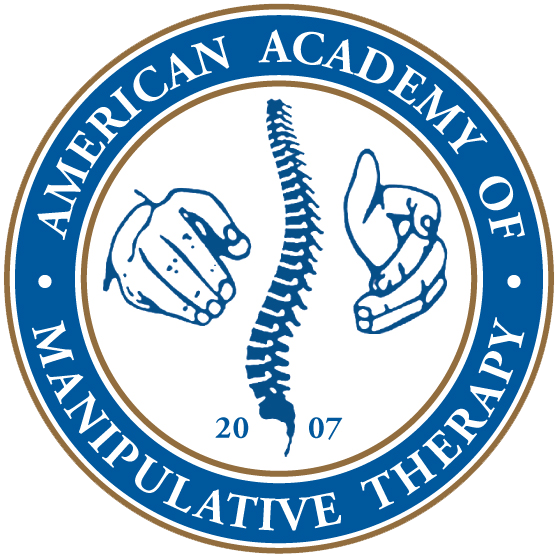Osteopractic Physical Therapy: Cost Effectiveness Compared to National Average
Physical therapy for high-cost, musculoskeletal injuries such as low back pain can cost upwards of $4,700.00 per patient.1 When compared to early access PT (i.e. 14 days or less), patients with low back pain that are immediately referred for advanced imaging by their medical physician typically incur higher health care costs and utilization (i.e. 67% higher per occurrence over a two year period).2,3 Certainly, evidence of cost savings and reduced utilization of services needs to be demonstrated in order to support the clinical utility and efficiency of PT interventions for the management of a variety of neuromusculoskeletal disorders. However, blindly cutting utilization of services to reduce cost, as some third party payers appear to be pushing, will not likely translate into meaningful long-term, patient-centered outcomes.
Pinnacle Rehabilitation Network dba Portsmouth Physical Therapy was created to provide better therapeutic outcomes in less time and at a cheaper cost. To accomplish this goal, we set out to execute a clinically driven model of patient care, whereby only highly skilled interventions backed by evidence were employed as first line treatments for neuromusculoskeletal conditions. That is, we hypothesized that being “the greatest walking hits” of evidence-based interventions of all conservative, musculoskeletal disciplines, and integrating the approach within the context of a U.S.-based healthcare model, would decrease medical cost and utilization while improving outcomes.
To help evaluate the vision, Portsmouth Physical Therapy approached a large local medical group that serves as the administrator for a robust health plan covering active and retired military service members and their families. As a major reimbursement source for Portsmouth Physical Therapy, the medical provider gave us unique access to physical therapy related cost and utilization data, allowing us to compare Portsmouth Physical Therapy to over 450 therapy providers within the same network!
During our analysis of the data, we noticed that one of the medical centers had 9 primary care providers on site, which included a national physical therapy chain. The previous 12 months of data revealed that the cost and utilization of the national therapy provider were 2 standard deviations higher than the mean of the other providers in the network. As such, Pinnacle Rehabilitation Network was granted a contract to replace the national chain therapy provider and an opportunity to realize its vision. After discussions with the medical staff and the health plan utilization review medical director, it was clear that a modern, evidence-based practice that could accommodate same day access for primary PT diagnostic categories such as low back pain, neck pain, shoulder pain, knee pain, etc. could provide an immediate reduction in costs related to unnecessary imaging and unwarranted referrals to medical and/or surgical specialists. The medical group was also receptive to the idea of having PTs co-evaluate and subsequently provide first-line input in determining the most appropriate treatment path for patients.
Importantly, the decision to replace the national chain physical therapy organization with the locally owned and operated Pinnacle Rehabilitation Network appeared to be primarily due to our ability to educate the medical group on the benefits of highly skilled and evidence-based manual therapy interventions including, but not limited to, high-velocity low-amplitude thrust manipulation of the spine and extremities, and dry needling to muscular trigger points, connective and/or peri-neural tissues for the management of neuromusculoskeletal conditions,4 i.e. what has come to be known as osteopractic physical therapy. Additionally, we presented several years of therapeutic outcomes collected with the web version of Focus On Therapeutic Outcomes (www.fotoinc.com). This system is a computer adaptive test that applies risk adjustment criteria based on specific patient data such as age, comorbidities, fear avoidance, diagnosis and insurance carrier, thereby facilitating a validate comparison between patients. For example, while there is significant diversity among the subgroups of patients with low back pain, the FOTO system adjusts the baseline and predicts outcomes based on patient-specific, risk-adjusted criteria to more accurately compare therapeutic outcomes across heterogeneous populations.
FOTO may also be used to compare efficiency, overall functional change and patient satisfaction among therapists and facilities. The system is capable of comparing the outcomes of 12,000 physical therapists with 450,000 annual patient encounters so as to provide accurate and predictable outcome scores. Importantly, FOTO has been shown to be meaningful, valid, and sensitive to change;5-9 furthermore, FOTO has been recognized by Congress and the National Quality Forum since 2009. In 2010, the Center for Medicaid and Medicare Services accepted the measures for use in the Physician Quality Reporting System.
The following FOTO data represents just over 1 year (11/1/2013 to 12/1/2014) of providing evidence-based osteopractic physical therapy at Portsmouth Physical Therapy. The “Service Category” statistics are compared to our previous practice, whereas the “Functional Improvement” outcome statistics are compared to FOTO national averages.
| Service Category | Outcome |
| Overall Patient Satisfaction | 99% Satisfaction |
| Utilization of PT Services | 60% Decrease |
| Cost of Physical Therapy | 35% Reduction |
| Functional Improvements | Outcome |
| Overall | 46% Improvement |
| Knee | 71% Improvement |
| Shoulder | 57% Improvement |
| Foot/Ankle | 33% Improvement |
| Spine | 21% Improvement |
| Hip | 16% Improvement |
| Neck | 16% Improvement |
We are proud to report that the results demonstrate a success story for Pinnacle Rehabilitation Network. A post-hoc analysis of the factors that could account for the outstanding performance of Pinnacle Rehabilitation Network suggests that “patient-first” treatment and advanced clinical-training were most likely the “difference-makers”. Interestingly, and likely of significance, the director of Portsmouth Physical Therapy was Certified in Spinal Manipulative Therapy (Cert. SMT) and Dry Needling (Cert. DN) through the American Academy of Manipulative Therapy (www.spinalmanipulation.org). He also had advanced training in differential diagnosis, non-thrust spinal and extremity mobilization, instrument-assisted manual therapy and was actively pursuing a Diploma in Osteopractic. In short, he was the “greatest walking hits” of evidence-based interventions for neuromusculoskeletal disorders and demanded the same of his staff. Certainly, the numbers speak for themselves. When cost, patient satisfaction and functional outcomes are compared to conventional physical therapy and national chain physical therapy practices, the data overwhelming supports the use of osteopractic physical therapy with an individualized and patient-centered approach.
AUTHORS:
Dan Fleury, DPT, Cert. DN, Cert. SMT, Dip. Osteopractic
Owner, Pinnacle Rehabilitation Network, Portsmouth, NH
Fellow-in-Training, AAMT Fellowship in Orthopaedic Manual Physical Therapy
Thomas Perreault, DPT, OCS, Cert. DN, Cert. SMT, Dip. Osteopractic
Clinic Director, Portsmouth Physical Therapy, Portsmouth, NH
Senior Faculty, AAMT Fellowship in Orthopaedic Manual Physical Therapy
REFERENCES:
- Fritz JM, Brennan GP, Hunter SJ. Physical Therapy or Advanced Imaging as First Management Strategy Following a New Consultation for Low Back Pain in Primary Care: Associations with Future Health Care Utilization and Charges. Health Serv Res. 2015 Mar 16.
- Childs JD, Fritz JM, Wu SS, Flynn TW, Wainner RS, Robertson EK, Kim FS, George SZ. Implications of early and guideline adherent physical therapy for low back pain on utilization and costs. BMC Health Serv Res. 2015 Apr 9;15:150.
- Delitto A, George SZ, Van Dillen L, Whitman J, Sowa G, Shekelle P, Denninger T, Godges J. Low Back Pain Clinical Practice Guidelines Linked to the International Classification of Functioning, Disability, and Health from the Orthopaedic Section of the American Physical Therapy Association. JOSPT. 2012 42(4):A1-A57.
- Dunning J, Butts R, Mourad F, Young I, Flannagan S, Perreault T. Dry needling: a literature review with implications for clinical practice guidelines. Phys Ther Rev. 2014 Aug;19(4):252-265.
- Wang YC, Hart DL, Werneke M, Stratford PW, Mioduski JE. Clinical Interpretation of Outcome Measures Generated from a Lumbar Computerized Adaptive Test. Phys Ther. 2010 Sep;90(9):1323-35.
- Wang YC, Hart DL, Stratford PW, Mioduski JE. Clinical Interpretation of Computer Adaptive Test Outcome Measures in Patients with Foot/Ankle Impairments. J Orthop Sports Phys Ther. 2009 Oct;39(10):753-64.
- Wang YC, Hart DL, Stratford PW, Mioduski JE. Clinical Interpretation of Computerized Adaptive Test Generated Outcome Measures in Patients with Knee Impairments. Archives Physical Medicine and Rehabilitation. 2009 90(8):1340-1348.
- Deutscher D, Horn SD, Dickstein R, Hart DL, Smout RJ, Gutvirtz M, Ariel I. Associations between Treatment Processes, Patient Characteristics and Outcomes in Outpatient Physical Therapy Practice. Archives Physical Medicine and Rehabilitation. 2009 Aug;90(8):1349-63.
- Deutscher D, Hart DL, Dickstein R, Horn SD, Gutvirtz M. Implementing an Integrated Electronic Outcomes and Electronic Health Record Process to Create a Foundation for Clinical Practice Improvement. Phys Ther. 2008 Feb;88(2):270-85.




